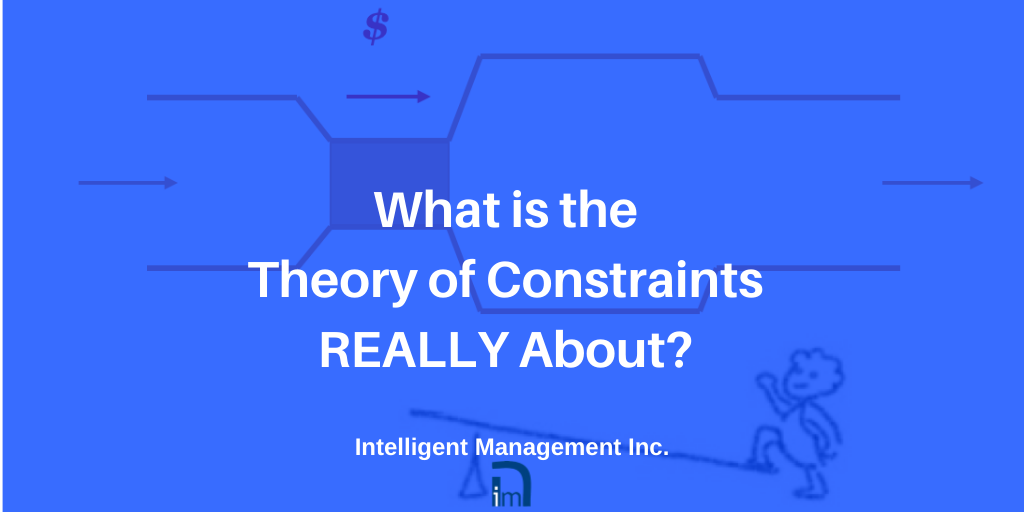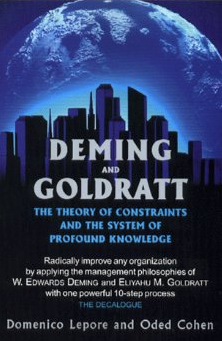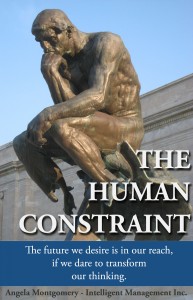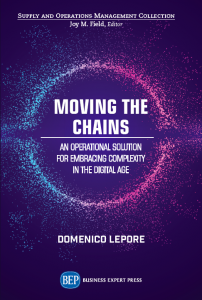
This week we had the pleasure of being invited to give an introductory seminar on the Theory of Constraints in Canada. As there can be many misunderstandings about what The Theory of Constraints really is, we thought it would be a good opportunity to share a brief overview in this post.
The theory of Constraints (TOC) is a body of knowledge and a management methodology that was developed from the late 1970s by Israeli physicist Dr. Eliyahu Goldratt in order to improve the flow in companies of products, information and cash.
The Theory of Constraints sees an organization as a system, i.e. a network of interdependent elements that interact to achieve a common goal. In order to radically improve performance, it focuses on one leverage point that is strategically chosen and this is referred to as the constraint.
The thinking that underlies this theory stems from a worldview of unity where all the parts of an organization are interconnected and it provides solutions for all aspects of management, from the minutiae of day-to-day disagreements right through to entire supply chain management.
Sadly, the Theory of Constraints is often lumped together with Lean and Six Sigma as an “improvement technique”. The Theory of Constraints is NOT “a bunch of techniques” that can be added to a toolbox. This is because it is a systemic approach and therefore it requires a particular mindset and understanding of organizations as systems.
The Theory of Constraints contains a series of powerful protocols to support operations (Production, Logistics, Distribution, R&D, Marketing, Sales etc.) What is truly unique about TOC is the paradigm it rests upon of continuously overcoming the mental models (limiting beliefs) that prevent people and companies form fully expressing their potential, something that can be achieved by correctly managing their constraint. These mental models (limiting beliefs) are what we at Intelligent Management have come to call the cognitive constraint that holds companies back. The Theory of Constraints provides the method and Thinking Processes to address and manage that constraint with success.
The Theory of Constraints concerns:
- Economics because it defines the value of a company as its ability to generate units of the goal (cash)
- Management because it provides an operational method and tools to achieve the company goal
TOC is relevant for businesses because:
1) It creates a real connection between the economic and financial aspects of the business with management of operations
2) It enables leadership to focus on the crucial aspects that determine profitability
3) It introduces elements of scientific thinking into management in a simple yet rigorous way
4) It enhances and systematizes entrepreneurial creativity and intuition
The algorithms (protocols) of the Theory of Constraints have been described in four business novels (as well as five non-fiction books).
- Production constraints – Drum Buffer Rope (See ‘The Goal’)
- Constraints in the speed of new product development – Critical Chain (See ‘Critical Chain’)
- Project Management (See ‘Critical Chain’)
- Replenishment constraints –Replenishment (See ‘It’s Not Luck’)
- Marketing and Sales – External Constraint (See ‘It’s Not Luck’)
- Constraints in managing the Information System so that it is relevant for generating throughput (See ‘Necessary But Not Sufficient’)
A constraint is NOT a bottleneck
Confusion about the Theory of Constraints can arise when people cannot distinguish between a bottleneck and a constraint. A constraint is NOT a bottleneck. It is a strategic leverage point: it is the part of the system where the organization can generate the most value, as perceived by the customer.
We avoid the insurgence of bottlenecks and the need for “whacking” them only to move them somewhere else by building enough protection capacity around the constraint so that it never shifts. In this way, the entire organization and its ability to generate cash through sales is interconnected through the constraint.
The constraint becomes the focus point for decision-making, preventing fire-fighting and accelerating results. Any improvement efforts that are not constraint-driven lead to a sub-optimal use of time and resources.
Managing the constraint
We manage the constraint through the five focusing steps
- identify the constraint – choose it
- exploit (leverage) the constraint – make it work all the time and on the optimal product mix
- subordinate to the constraint – build the whole network of interdependencies in a way that has the statistical capability to support the optimal functioning of the constraint – buffer management
- elevate the constraint – increase its capacity
- if the constraint has moved (i.e. elevating it makes it shift) then go back to step 1
The Theory of Constraints is a systemic approach and requires a new set of measurements that tell us how the whole system is performing. Throughput Accounting provides a set of measurements that inform us about speed of flow.
Learning how to think
In the 1990s, Dr. Goldratt completely reformulated the Theory of Constraints through the Thinking Processes. It had become clear to him that even a physical constraint is such because of the way we think. It always comes back to the assumptions we make, or the mental models that we have that create artificial limitations in the performance of a company or organization. The Thinking Processes accompany the three major questions in TOC:
- What to change
- What to change to
- How to Make the change happen
Dr. Goldratt identified 6 layers of resistance to change that organizations encounter as they implement change. For each layer, there is a corresponding Thinking Process that enables people to overcome their resistance and move forward with a systemic solution.
There are those who refer to the Thinking Processes as “logical tools”. This completely misses the point. The kind of logic that underpins the Thinking Processes is not a mathematical, rational logic. Humans are a lot less rational than people may believe. We always bring with us an array of emotions when it comes to interacting with others and making decisions. By using the Thinking Processes on a regular basis, we improve our ability to think systemically. They allow us not just to connect the dots, but to see the dots that we would otherwise not even see. This is the path of true innovation. They allow us to harness and channel our intuition and emotions in a constructive way towards a common goal and they provide a practical way of transitioning ideas into reality. At Intelligent Management, we like to say that they help us develop “intelligent emotions“.
The sky is not the limit
It has been our privilege to be part of the development of the Theory of Constraints since the mid 1990s. In 1999 with Goldratt’s publisher, we published ‘Deming and Goldratt: The Decalogue’. It was the first book to be published by Goldratt’s publisher concerning the theory of Constraints that was not written by Goldratt himself. It continues to sell and has become a management classic. It was the first time we formally introduced our Decalogue methodology that is a powerful synergy of Deming’s management philosophy with the Theory of Constraints. The ten steps of the Decalogue serve to transform an organization into a coordinated and synchronized system. The universality of the Theory of Constraints has allowed us to help companies internationally to radically improve their performance in every kind of sector over the last 25 years. 
Goldratt used to say that “the sky is not the limit”. Working with the Theory of Constraints has transformed our lives and the lives of others in ways that would not have been possible without the support and inspiration of this remarkable body of knowledge.
Contact: intelligentmanagement@sechel.ws
SCHEDULE AN INTRODUCTORY CALL WITH US







Angela,
This is the best articulation about ‘WHAT TOC IS’ that I have perused since 1995. It is Simple but NOT Simplistic, Simple but NOT Easy and Simple but NOT a Cake-walk. My Compliments!
Thank you so much for this comment and it is all the more appreciated as it comes from someone with many years of experience with TOC.
Angela , You rae awesome.
Hatsoff to you.
Yes Sir, This is really an ultimate article.